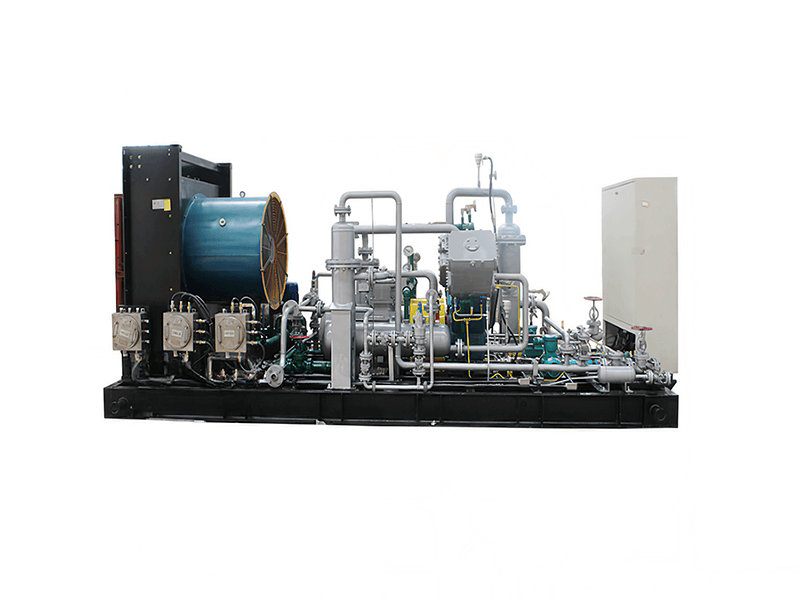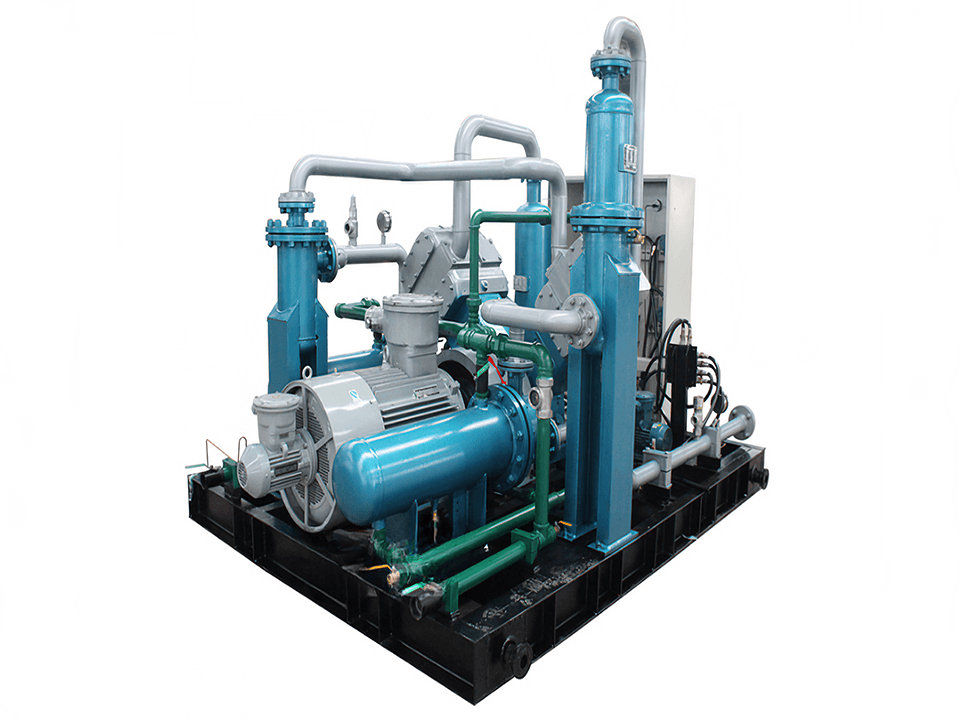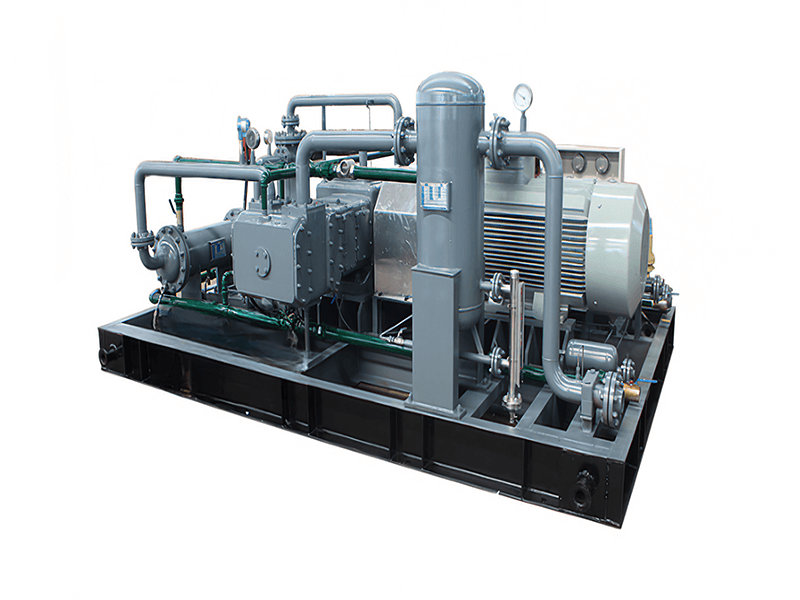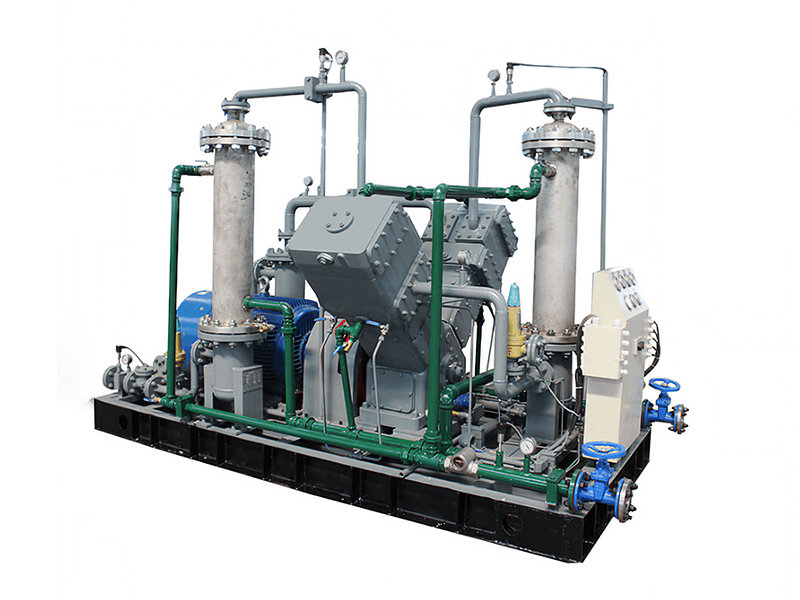Helium, as a noble gas, holds an irreplaceable and crucial position in industrial production and scientific research. To understand the special design requirements for helium compressors, it is first essential to gain a deep understanding of the unique physical properties of helium. Helium belongs to the family of inert gases, located in Group 18 of the second period in the periodic table. Its atomic structure features completely filled electron shells, a characteristic that determines its chemical inertness and distinctive physical behavior.
Helium is the most difficult gas to liquefy among all known gases, with a critical temperature as low as -267.96°C and a critical pressure of only 0.227 MPa. This extremely low liquefaction temperature ensures that helium remains in the gaseous state during compression at ambient temperatures and does not undergo phase change. It is noteworthy that helium is the only substance that does not solidify under atmospheric pressure even when the temperature is reduced to absolute zero, a characteristic originating from its quantum mechanical effects and the existence of zero-point energy. The molecular diameter of helium is merely 0.26 nanometers, making it the smallest gas molecule besides hydrogen. This property results in its extremely high permeability and strong tendency to leak. Experimental data indicate that under identical conditions, the leakage rate of helium is 2.7 times that of nitrogen and 3.1 times that of air.
Under standard conditions, the density of helium is 0.1786 kg/m³, approximately one-seventh the density of air. This low density poses severe challenges for the seal design of traditional compressors. Concurrently, low density also implies that for the same volumetric flow rate, the mass flow rate of helium is smaller, which directly impacts the compressor's power calculation and thermodynamic design. The dynamic viscosity of helium at 20°C is 1.87×10⁻⁵ Pa·s, slightly lower than that of air; this property influences its flow resistance and heat transfer characteristics within the compressor flow passages.

The thermophysical properties of helium are equally unique. Its specific heat ratio reaches 1.66, higher than that of most common gases, which means it generates a higher temperature rise during compression. Specifically, during adiabatic compression, the temperature rise of helium is approximately 18% higher than that of air. The speed of sound in helium at 0°C reaches 965 m/s, about three times the speed of sound in air; this characteristic imposes special requirements on the airflow passage design and vibration analysis of compressors. Furthermore, the Joule-Thomson inversion temperature of helium is approximately -238°C; it exhibits a heating effect when compressed at room temperature, a property that directly affects the control of temperature rise during the compression process. The thermal conductivity of helium under standard conditions is 0.142 W/(m·K), six times that of air; while this property is beneficial for heat exchange, it also increases the design complexity of interstage cooling systems.
From the perspective of kinetic theory, the mean free path of helium molecules is relatively large, reaching 0.18 μm under standard conditions. This leads to significant differences in its flow characteristics within microscopic gaps compared to conventional gases. When the flow channel size is comparable to the molecular mean free path, helium exhibits a noticeable rarefied gas effect, which must be considered in the design of seal clearances and bearing gaps. The Prandtl number of helium is approximately 0.68, indicating that its momentum diffusivity surpasses its thermal diffusivity; this characteristic significantly impacts heat exchanger design. In practical heat exchanger design, this property of helium requires special consideration, necessitating the adoption of heat transfer enhancement measures.
Regarding thermodynamic properties, the compressibility factor of helium is close to 1 at standard temperature and pressure, and it can be treated as an ideal gas. However, as the pressure increases, particularly beyond 5 MPa, its compressibility factor deviates significantly from 1, requiring the use of real gas equations of state for calculations. The virial coefficients of helium are small, indicating weak intermolecular forces; this property also influences the selection of the equation of state under high pressure.
In practical engineering applications, these properties of helium impose stringent requirements on compressor design. The extremely small molecular diameter necessitates special sealing systems, typically selecting dry gas seals or magnetic fluid seal technology. The low density characteristic requires greater compression work, placing higher demands on the power configuration of the drive system. The high thermal conductivity, while advantageous for heat exchange, increases the design difficulty of interstage cooling systems. Additionally, the high speed of sound characteristic demands more rigorous dynamic analysis of the compressor rotor to avoid acoustic resonance phenomena.
It is particularly important to note that the quantum effects of helium under high pressure cannot be ignored. When the temperature falls below 10 K, helium exhibits superfluid properties; these quantum effects can indirectly influence compressor design even at room temperature and high pressure. In the design of compressor valves and sealing systems, the potential impacts of these quantum effects must be considered.
Understanding these unique physical properties of helium is the foundation for correctly selecting and designing helium compressors. Only by fully considering these characteristics can the reliable performance and high efficiency of the compressor system be ensured during long-term operation. In practical engineering design, it is recommended to utilize specialized helium property databases, such as the NIST REFPROP database, to obtain accurate thermophysical property parameters and provide reliable data support for compressor design.

























